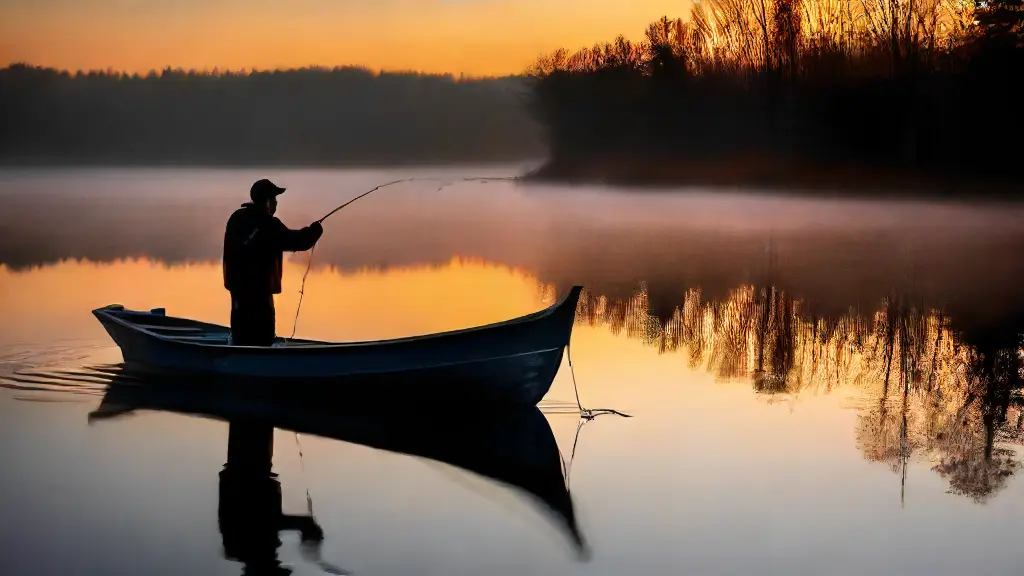Setting the Hook: Techniques for Muskie Fishing

The allure of Muskie fishing lies in its unpredictability, as even the most experienced anglers can attest to the importance of a swift and precise strike.
In the world of Muskie fishing, timing is everything.
A swift and precise strike can make all the difference between a catch and a missed opportunity.
This elusive species requires a combination of skill, patience, and strategy to reel in.
With practice and the right techniques, you can master the art of setting the hook and land the fish of a lifetime.
The Importance of Timing and Force
When it comes to setting the hook, timing and force are critical. A well-timed strike can translate into a successful catch, while a poorly timed strike can result in a broken hook or catastrophic force of the reel’s drag on a prized Muskie.
Forceful Hook Sets
Mastering the art of muskie fishing requires a deep understanding of the intricacies involved, particularly when it comes to setting the hook with precision and power.
One of the most crucial factors in setting the hook successfully is accuracy, as even the slightest miscalculation can result in a lost strike.
The unique anatomy of a muskie’s mouth, featuring a robust jaw structure and remarkable suction ability, presents a challenge for anglers seeking to land their catch.
When selecting the right hook, it’s essential to consider factors such as size, material, and design, as a mismatch can lead to a failed strike.
A powerful forceful hook set necessitates a harmonious blend of technique, lure, and rod, allowing anglers to capitalize on their catch. The angler adjusted the rod with precision to ensure a perfect strike and catch.

When to Strike
As you cast your line into the water, it’s essential to understand the intricate dance between the angler, the environment, and the elusive muskie. The rhythmic flow of the Current, the mysterious Depths of the lake, and the gentle Lapping of the Waves on the surface all contribute to the art of knowing when to strike.
Muskies are opportunistic feeders, and their feeding patterns are influenced by various factors, including the presence of Fish and the Games they play.
By identifying prime strike zones and patterns in Muskie behavior, you can increase your chances of landing a strike.
Recognizing Visual Cues
Visual cues are an essential part of detecting a strike. Baitfish fleeing or a muskie’s sudden movement can indicate a strike is imminent. By paying attention to these cues, you can anticipate a strike and be prepared for the big catch, whether it’s a fish or part of the game.
| Factors Influencing Muskie Feeding Patterns | Visual Cues | Prime Strike Zones | Behavior Patterns |
|---|---|---|---|
| Presence of Fish and Games they Play | Baitfish Fleeing or Muskie’s Sudden Movement | Areas with Structure and Cover | Opportunistic Feeders |
| Current and Water Flow | Sudden Changes in Water Temperature | Areas with High Fish Activity | Variable Feeding Patterns |
| Lake Depths and Water Clarity | Changes in Water Clarity | Areas with Submerged Structure | Adaptable Feeding Habits |
Timing is Everything
Experience has shown that the art of muskie fishing requires an unwavering commitment to precision, as even the slightest miscalculation can result in a missed opportunity. Timing is everything, and anglers must be prepared to adapt their strategies to the ever-changing environment.
Understanding the behavior and body language of muskie species is vital in setting the hook, as it allows anglers to employ techniques that mimic prey vibrations and movements, increasing their chances of catching these elusive fish.
Reading the Water
A crucial aspect of muskie fishing is familiarizing yourself with the water’s depth, structure, and bottom composition, techniques that involve attention to underwater cover, such as rocks, weeds, and sunken logs. When a muskie bites, it’s essential to quickly lift the rod to set the hook and avoid losing the fish.
Reeling in Success
Savvy anglers know that mastering the art of fishing requires a keen understanding of timing and presentation, two essential elements that often make or break a successful catch. For muskie fishing, this delicate balance is paramount, as it separates the skilled from the novice.
理解 presentation 和 timing 的重要性是 muskie fishing 的关键。 A correctly set hook is crucial for landing a fish, and this often depends on the angler’s ability to identify optimal hook setting moments.
Mastering the art of hook setting is critical to reeling in success, and it’s an area where many anglers struggle.
By focusing on key techniques and timing, anglers can improve their chances of handling a muskie with care. When it comes to landing a big catch, safety is paramount, and having the proper Gear and Equipment, Handled on Board.
Facts About Muskie Fishing
- A correctly set hook is crucial for landing a fish.
- The ability to identify optimal hook setting moments is critical for successful muskie fishing.
- Focusing on key techniques and timing can improve an angler’s chances of handling a muskie with care.
- Having the proper gear and equipment is essential for landing a big catch safely.
Muskie Hooking Techniques
When venturing into the freshwater world, anglers often find themselves captivated by the elusive Muskie, a species renowned for its cunning nature and formidable size. On the shore of a serene lake, or drifting down a winding river, the thrill of reeling in a monster catch lies within the realm of possibility.
Hook Set Initiation: Understanding the Timing and Cues
Identifying the Strike
The first step in setting a hook is recognizing the strike.
This can happen in the form of a sudden tug, a visual indication of a fish swimming towards the lure, or even a audible splash.
It’s essential to stay alert and focused to catch the strike.
The Power Flick is especially useful for freshwater fishing in streams.
.
Catching the Big One
As dawn breaks, the thrill of the hunt begins, and anglers prepare to embark on a journey to snag the elusive predator lurking beneath the surface.
Understanding Muskie Behavior and Feeding Patterns is Crucial
Muskie behavior and feeding patterns vary depending on species, season, and environment, with most active periods during early morning and late evening hours when they feed on baitfish and small species in the wildlife-rich environment.
Choosing the Right Lure and Presentation is Key
When selecting a lure, consider the outdoor environment and the muskie’s natural habitat, as a lure that imitates a small fish or baitfish can be particularly effective in attracting a muskie’s attention.
Presentation is also crucial, with slow, deliberate movements enticing a muskie to strike in the conservation efforts aimed at preserving their habitat.
| Time of Day | Feeding Patterns | Lure Type | Presentation |
|---|---|---|---|
| Early Morning and Late Evening | Baitfish and Small Species | Small Fish or Baitfish Imitation | Slow, Deliberate Movements |
| Varies Depending on Species and Environment | Varying Diet | Consider Natural Habitat | Conservation Efforts |
| Most Active Periods | Peak Feeding Hours | Imitate Prey | Attract Muskie’s Attention |
Setting the Hook Properly
As the thrill of a new Sports adventure washes over you, it’s essential to understand the intricacies of setting the hook properly to maximize your chances of catching the big ones.
The gentle art of setting the hook is a crucial aspect of muskie fishing, requiring a delicate balance of control and finesse.
Unlike other types of fishing, muskie fishing demands a particularly gentle and controlled hook set to avoid scaring off the fish or even worse, losing them.
By mastering the art of setting the hook properly, you’ll increase your chances of reeling in the big ones and make your fishing experience a success. We’ll explore the importance of a gentle, controlled hook set in muskie fishing, offering expert tips to elevate your Leisure time and make the most of your time on the water.
What to Expect When Hooked
As the anticipation of reeling in a catch reaches a fever pitch, our senses are heightened, setting the stage for an unforgettable experience. The rush of adrenaline courses through our veins, preparing us for the intense physical sensations that lie ahead.
The initial reaction is a rush of tension, as our bodies respond to the sudden pressure.
This is a moment that requires a deep understanding of technique, allowing us to adjust our approach with precision.
What to expect when hooked is a thrilling combination of sensations and emotions, making it an experience that lingers long after the catch is landed. As the fight continues, it’s essential to maintain a steady pace and make adjustments on the fly, leveraging our persistence.
Under the right conditions, the equipment hums along smoothly, allowing us to tap into our knowledge and skill. The subtle dance between rod and reel is a symphony of give-and-take that requires Excitement to initiate, Thrill to chase, Skill to master, Knowledge to guide, Practice to hone, Precision to perfect, and Patience to appreciate.
Fishing
- The fight can last anywhere from a few minutes to several hours, depending on the species of fish and the skill level of the angler.
- The physical sensations experienced during a fish fight can be intense, including muscle fatigue, heart palpitations, and increased blood pressure.
- A deep understanding of fishing technique and the ability to make adjustments on the fly are crucial for landing a catch.
- With practice and experience, anglers can develop the skills and knowledge needed to master the art of fishing and enjoy a more rewarding and enjoyable experience.


